Megan Mosby
Executive Director
If you follow Liberty Wildlife on social media or the local news, you may have seen posts about a recent success of ours. On September 30, we released four Swainson’s hawks that were brought to us for rehabilitation. One was an adult who had been found on the ground in Mohave County by Wildlife Manager for Game and Fish, Nick Thompson. It was physically down, very thin and dehydrated. After a four-month recovery, it was readied for release. There were also three Swainson’s hawk orphans that came in from the Prescott area who were ready for release at the same time.
Swainson’s hawks are remarkable raptors. They make a Herculean migration twice a year to as far south as the Pampas of Argentina with a round trip being as much as 12,000 miles. So, with great trepidation we were about to release one rehabbed Swainson’s with three fledglings, all facing a long trip ahead of them. Researchers from Arizona Game and Fish with an interest in the success of such a bird put a GPS lightweight backpack on the adult to track its progress. We figured the best thing to do for the three novice birds would be to release them with an adult who had made the trip before.
The very cool thing about this is that we now have physical updates on the success of our adult on its journey south. The first report we got showed the GPS Swainson’s hawk had made it into northern Mexico on its way to its wintering grounds. On October the 13, the tracker showed it in the state of Durango or close by. By October 17, it was shown to have traveled 1,090 miles from Liberty Wildlife and hopefully on its way to pass through Veracruz, a coastal state that witnesses an impressive number of migrating birds as they seek out the thermal lift and congregate where the conditions are best for traveling. The scientists are confident that our Swainson’s is not alone on its journey, and we can only hope that the youngsters we released with it are traveling along.
On October 19, the signal was picked up passing in between two established count sites. It continued to make progress covering 745 miles in five days and was in Guatemala on October 21. That put him 1,830 miles from Liberty Wildlife in 22 days.
Another migration watch site is in Panama City, and, hopefully, it will be sited there. Once he enters South America, we will lose contact until it starts its return north in the spring. Fingers crossed that the migration both ways will be successful and great hopes that the other juveniles we released will succeed too. It is such a huge expectation for a little feathered creature to make the journey both ways and succeed in reproducing in its breeding grounds….wow….just wow..!
It isn’t often that we get this kind of reporting. With the thousands of releases that we do every year we make the wish for the success of the creature. To have our work confirmed is satisfying and reassuring.
It makes the success of a fundraiser, like Wishes for Wildlife, even more important. The money we made on last weekend’s benefit will go a long way in helping more creatures go back into the wild where they are supposed to be.
Thanks to all of you who stepped up to the plate in our pivot to virtual this year and made Wishes for Wildlife 2020 the biggest success in many years.
Thank you, thank you, thank you! Here’s to second chances.
![]()
This Week @ Liberty – October 27, 2020
The intake total inexorably builds and the only question now is if we will hit 12,000 before the year turns. Although the overall rate of arrivals is down, the number of different species is climbing, mainly due to migration which brings in animals that are not found in our area most of the year. Because many new patients are immatures and subadults, it’s sometimes a challenge to correctly identify their species as they show up at the intake window. I end up texting a lot of photos to our resident “power birders” like Anne, Craig, and Susie for verification – makes it a fun game! Jan and Alex help me identify the volunteers in the pictures. It’s a little tougher now with the masks, but I’m hoping everyone will start wearing their access badges so I can see their names. Too bad the birds and animals don’t wear ID tags for all to see!
~~~~~~~~~~~~~~~~~~~~~~~~~~~~~~~~~~~~~~~~~~~~~~~~~~~~
Rescue and Transport volunteer Lisa Blue was called out to a church where a great horned owl had become entangled in a volleyball net. Unable to free the bird with the net intact, it was determined by consulting with the groundskeeper that cutting the net would be approved in order to effect the rescue. The bird was then transported to Liberty for evaluation and treatment. Good job!
Look for 4 pictures
As I said above, we’re seeing a great variety of species right now during migration season. This Egyptian goose came in recently presenting damage from fishing line around his leg similar to that which we see all too often in ducks and geese on local lakes. Native to Africa, this species of goose is popular in zoos and aviaries though escaped birds have established wild populations in Florida, Texas, and California, and free-flying escapees are sometimes seen elsewhere (like, maybe Arizona?).
Officers from the Humane Society recently brought in this wild domestic turkey. People have already commented on the timing of his arrival so close to Thanksgiving…!
This diminutive grasshopper sparrow was found on the ground and brought to the Liberty intake window. Again, most likely on migration, the little grasshopper sparrow likes vast grasslands and as such is at risk not only from climate change in general, but from the proliferation of wildfires in particular.
Ring-necked pheasants are also suited to life on the prairies. Being game birds, they are hunted across North America. This individual appears to be slightly off course in migrating possibly due to the effects of climate change.
Probably an escaped (or abandoned) pet, this iguana appears to be missing a large portion of his tail. Having to fend for himself in the wild, iguanas are like many reptiles in that their tails are expendable when attacked.
The red-naped sapsucker arrived last week and appears to be in fairly good shape. A western bird, common in the Rocky Mountain and Great Basin regions it is very similar to Yellow-bellied Sapsucker, and for most of the 20th century it was considered only a subspecies of that bird. Again, he’s probably on migration and ran into trouble in unfamiliar territory, although they are not terribly uncommon in our area.
We also took in another bird that was probably somebody’s escaped or dumped pet. The pretty blue Quaker (or monk) parakeet makes a great pet, although they are considered invasive and are illegal in many states. A native of South America, they were probably imported as an adjunct to the pet trade prior to regulations designed to limit their impact on local populations.
Look for 9 pictures
Not all the latest arrivals are uncommon migrators. To be sure, we still get the usual suspects – great horned owls, Harris’ hawks, peregrines, mallards and cormorants. As always, every patient is assessed with care and a plan of treatment is established and followed. Having a great staff of volunteer veterinarians and vet students on hand means that animals that prior to being rescued had virtually no hope of survival, in many cases now have a good chance to be rehabilitated and released.
Look for 9 pictures
We currently have a couple of injured turkey vultures in our care. One has a fractured leg which was recently pinned surgically. The external fixators keep multiple steel pins in place which intern keep the leg bones aligned while calluses form in the healing process. When the bones have mended satisfactorily, the pins can be removed. Turkey vultures normally only use their legs for walking so strength is not of primary concern.
The other bird had presented high lead levels in his blood. Much like the California condors, this vulture had ingested an animal that had been shot with lead ammunition. Its body was breaking the fragments down trying to expel the toxic substance but the latest x-ray revealed a small particle still remained. It doesn’t take a very large piece to cause illness. Treatment continues…
Look for 4 pictures
When we built the wetlands pond 4 years ago, we wondered how we could make it a livable habitat for native Arizona aquatic life. We really didn’t have to worry as life seems to have sprung up on it’s own. An abundance of minnows and other fish as well as tadpoles now inhabit and are visible in the pond. Recently some of the volunteers noticed tiny frogs sitting on the lily pads which grow in the water. Each afternoon, several of the tiny amphibians can be seen quietly sunning themselves on the large pads under the protective canopy of foliage growing on the shoreline. If anyone happens to know exactly what species they are, please let us know.
Look for 1 picture
Posted by Terry Stevens
Operations Director
Leave a Reply
Want to join the discussion?Feel free to contribute!



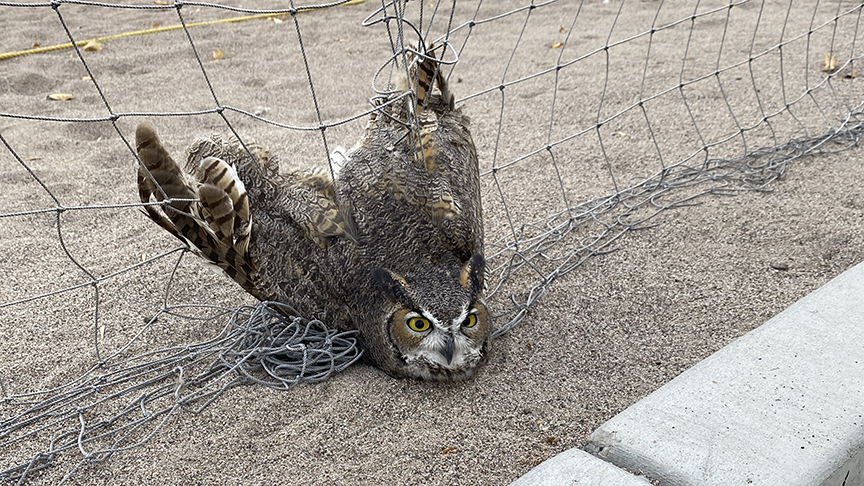
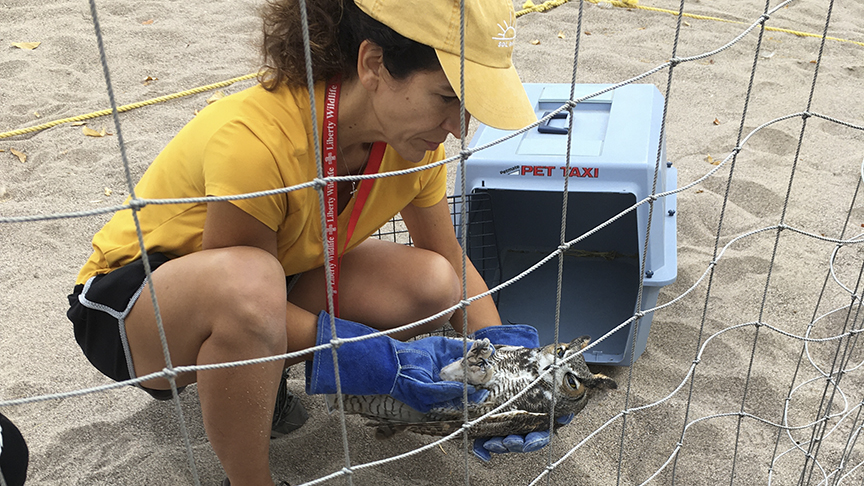
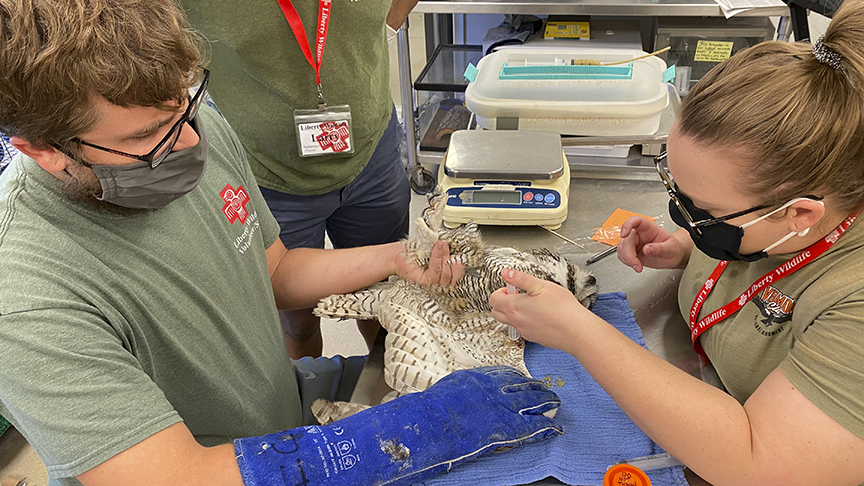
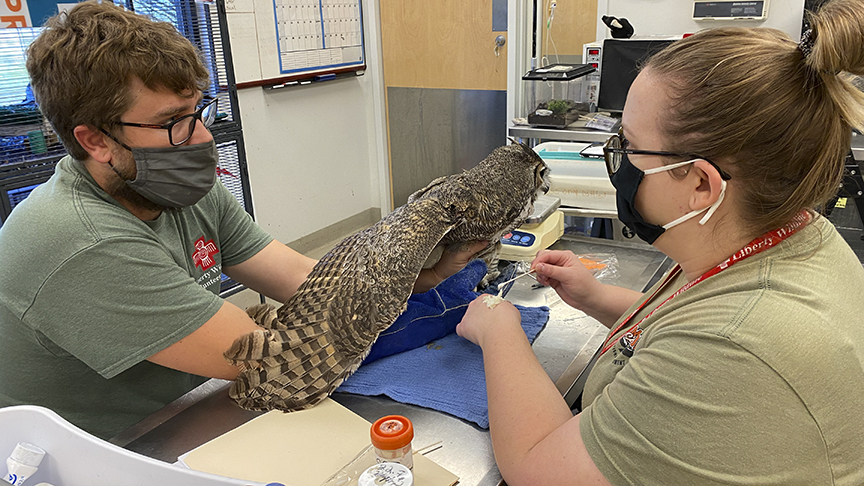

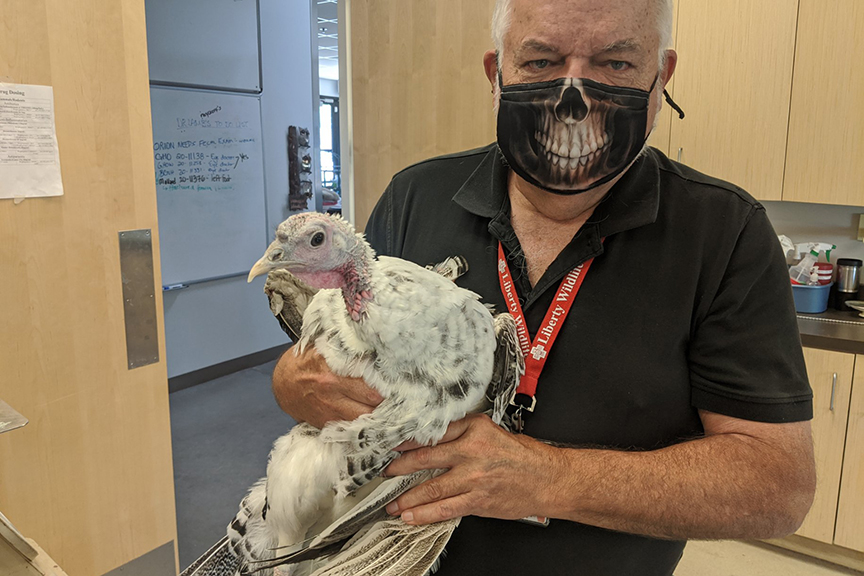
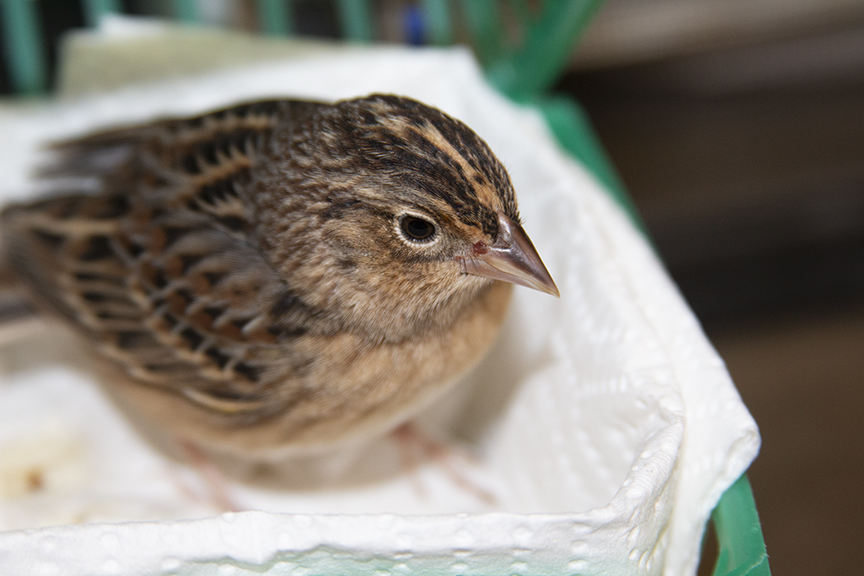

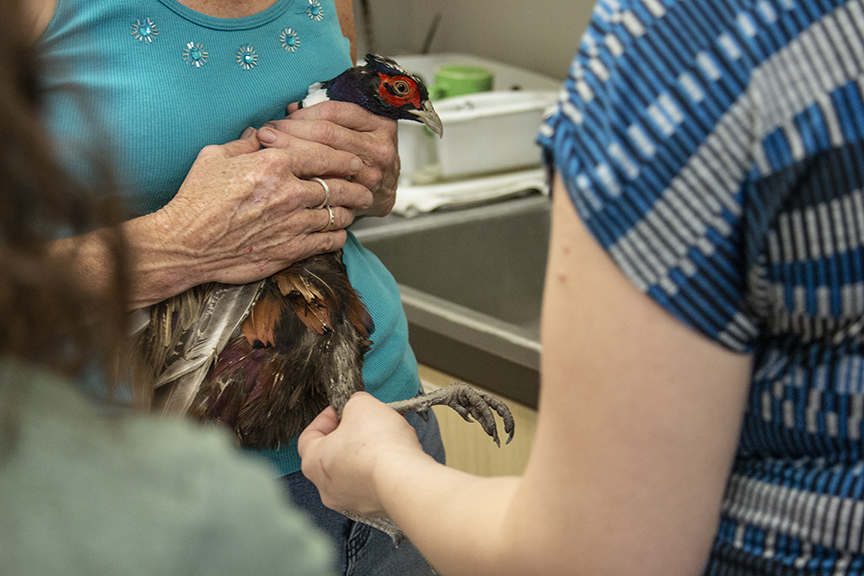
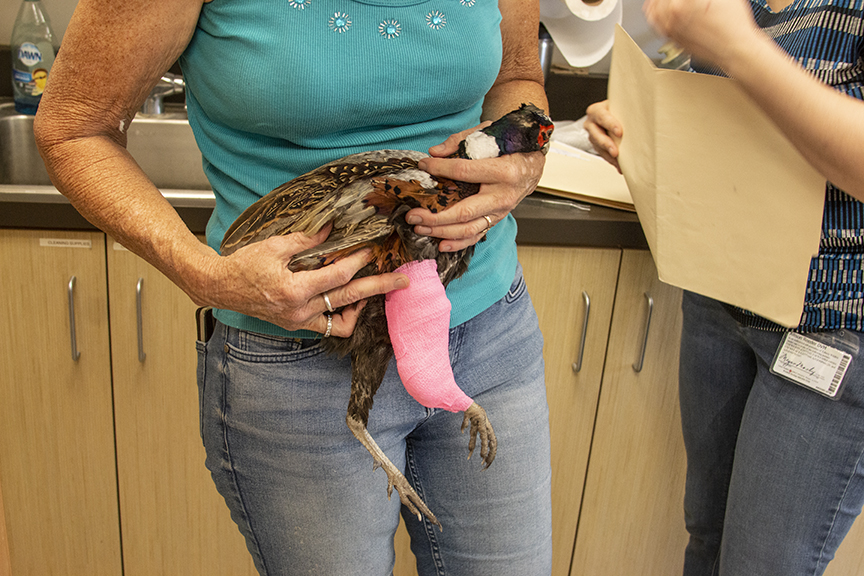
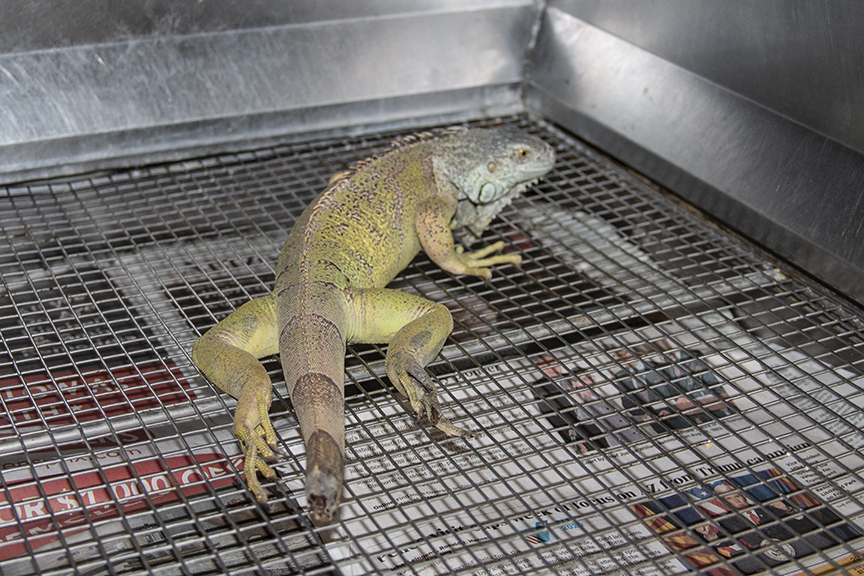


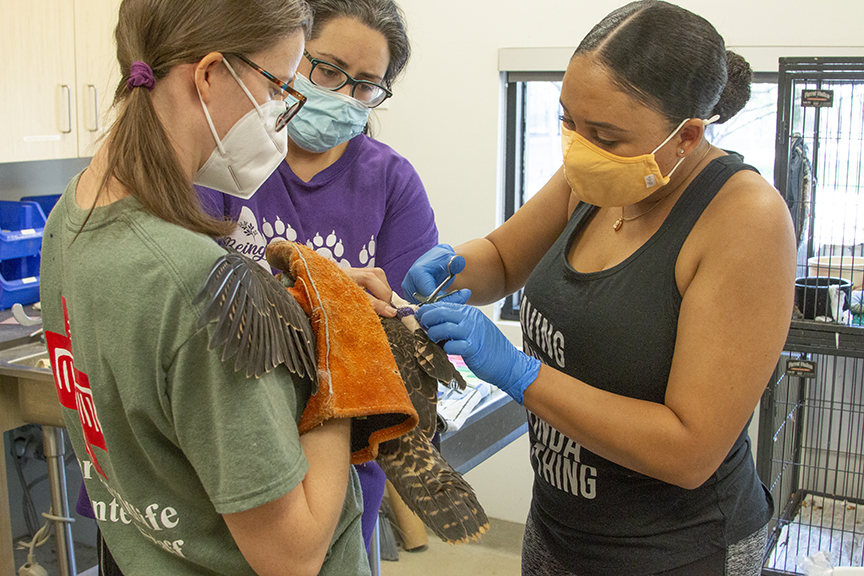
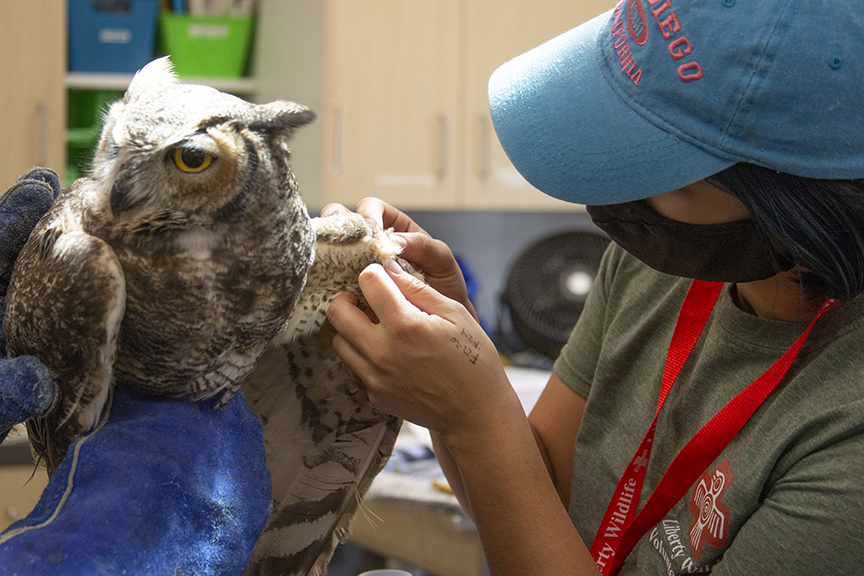
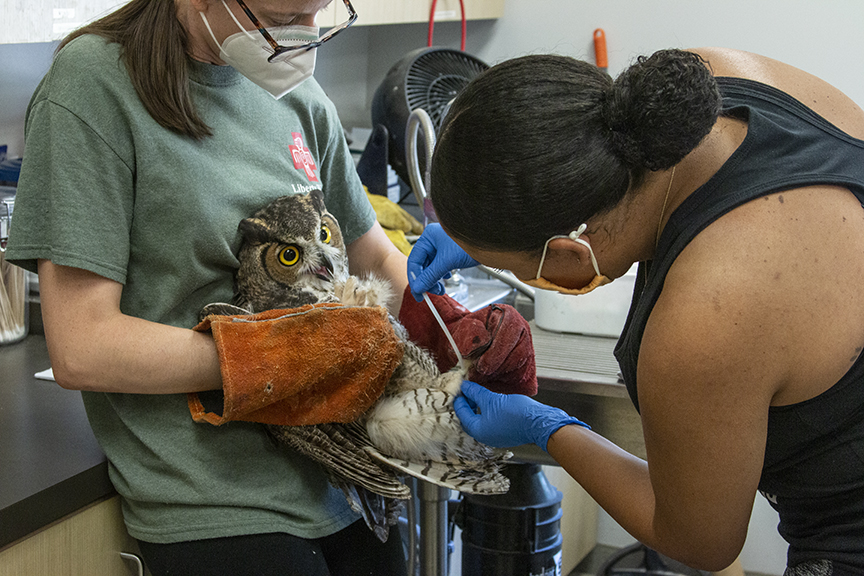

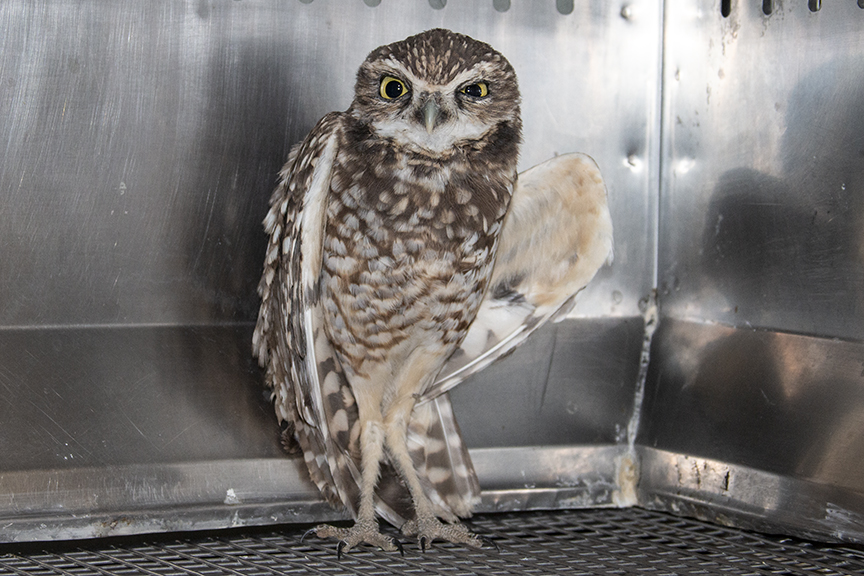
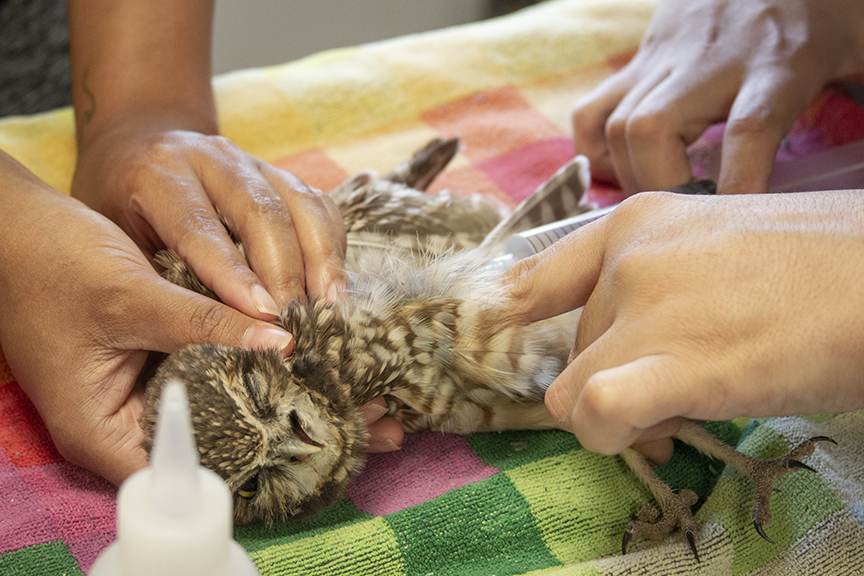
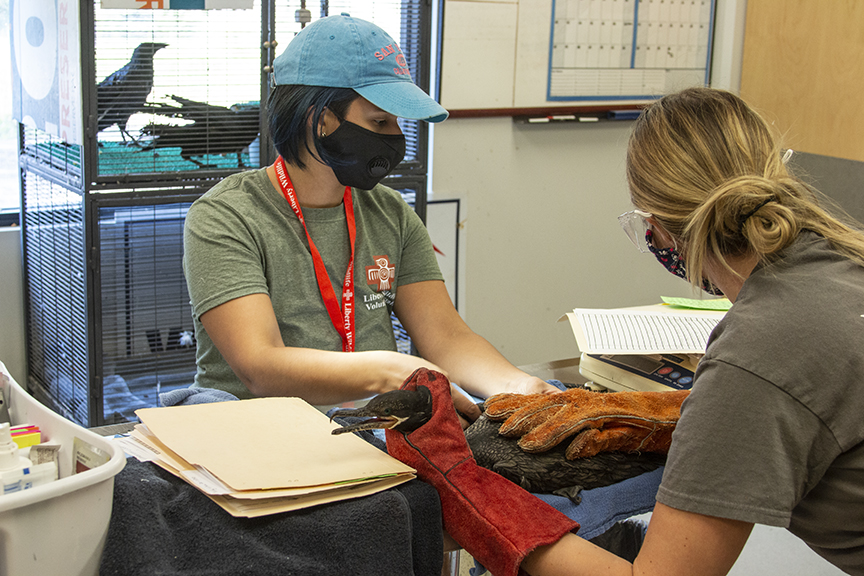
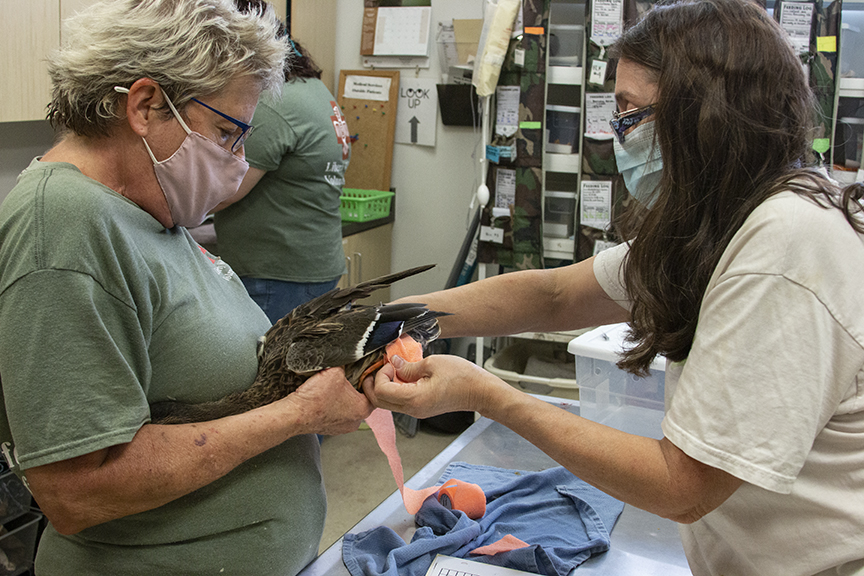
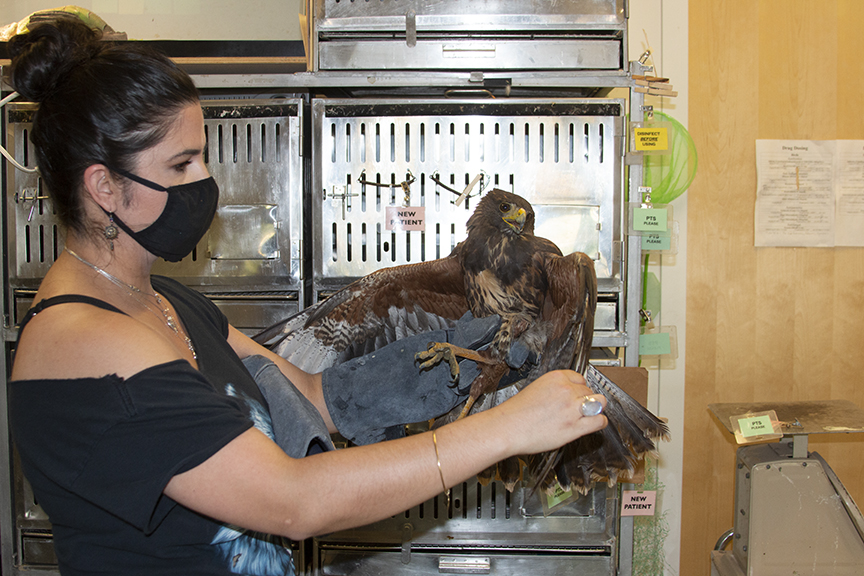


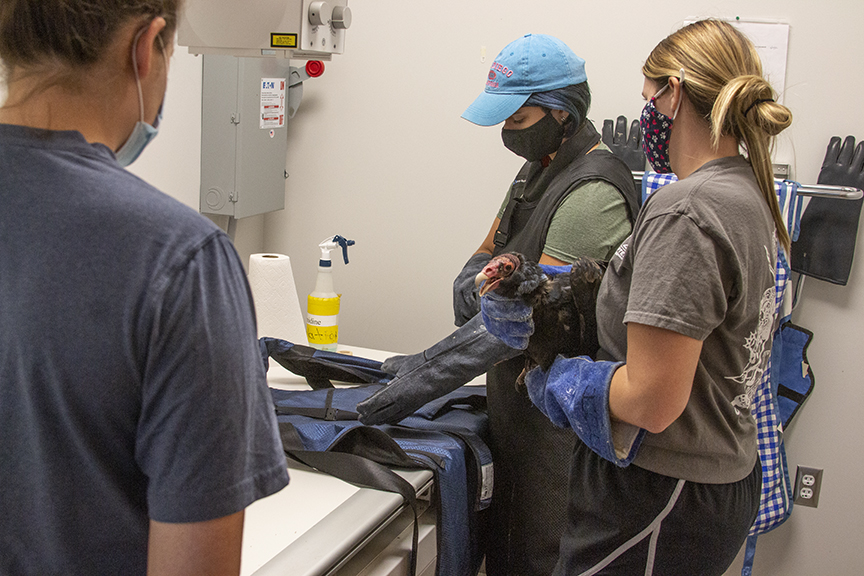

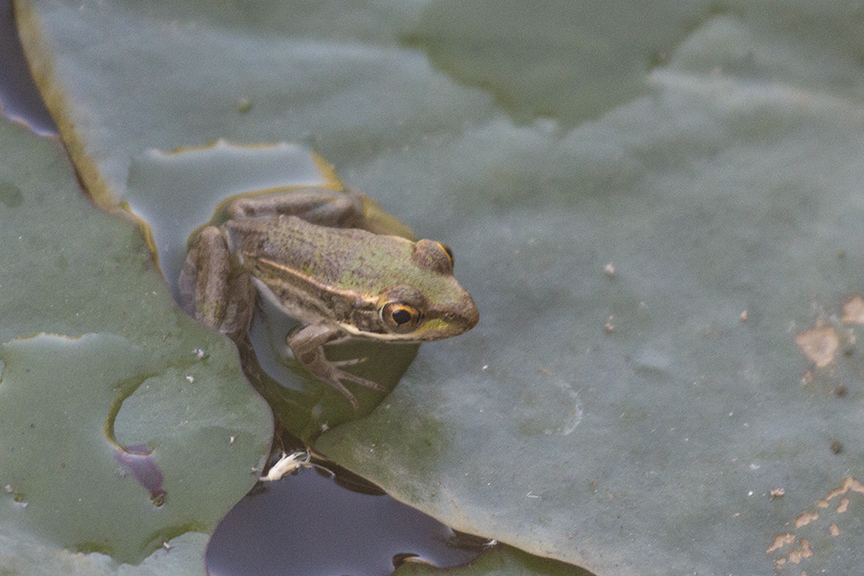
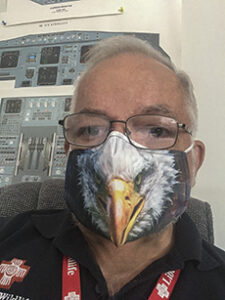
Veracruz is special for migrants. It’s a path of narrow land that birds cross because they resist flying over water or the cordillera. That also makes Veracruz the premier raptor counting area. The River of Raptors
Is the Blue Quaker up for adoption?
He/she will be. Check with Jan.
Thanks, I will pass that on to my friend.